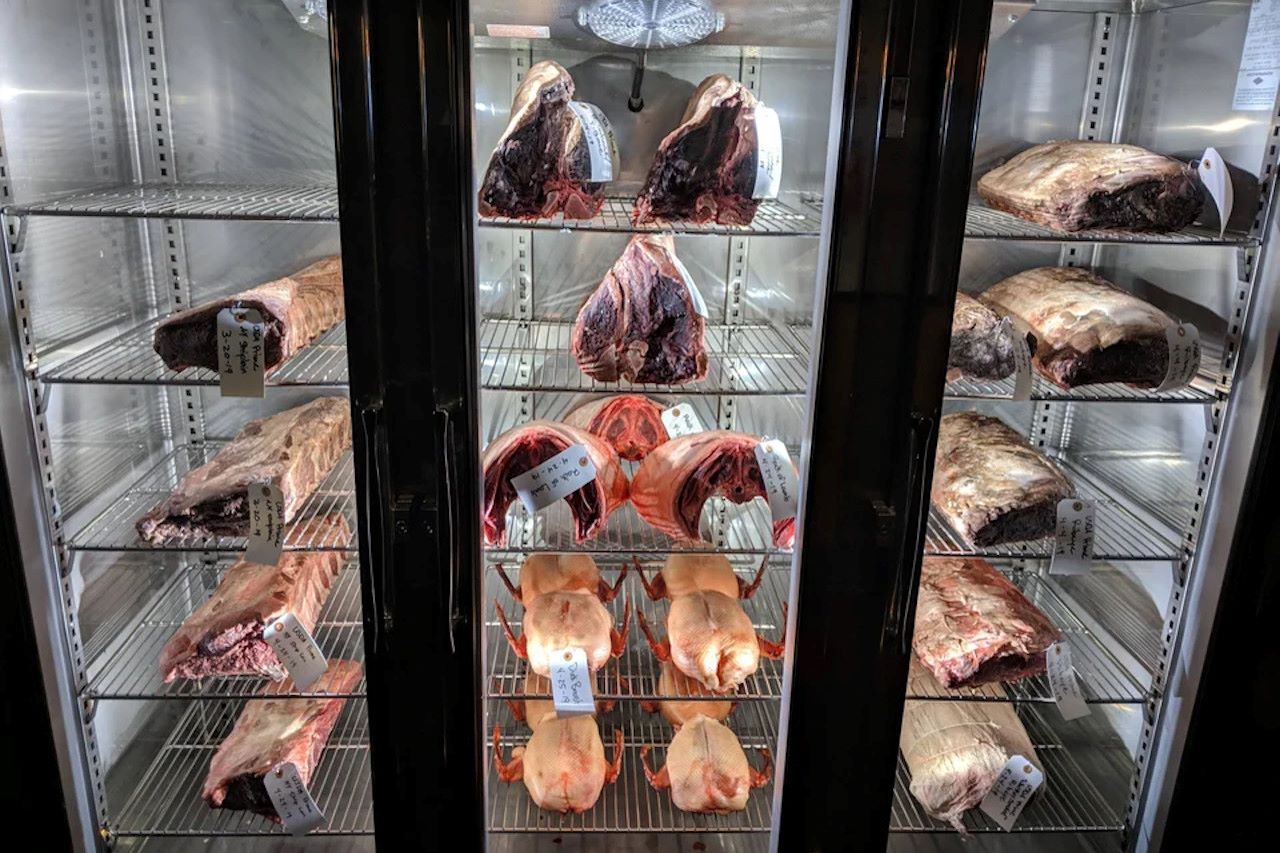

Articles
How To Store Dry Aged Steak
Modified: February 26, 2024
Learn the best techniques for storing dry-aged steak to preserve its flavor and tenderness. Read our informative articles for expert tips and advice.
(Many of the links in this article redirect to a specific reviewed product. Your purchase of these products through affiliate links helps to generate commission for Storables.com, at no extra cost. Learn more)
Introduction
When it comes to enjoying a perfectly cooked steak, there’s nothing quite like the rich, intense flavor of dry aged beef. Dry aging is a process that involves storing cuts of beef in a controlled environment for an extended period of time. This allows natural enzymes to break down the connective tissues in the meat, resulting in a more tender and flavorful steak.
Dry aged steak has become a favorite among steak lovers and high-end restaurants alike. However, many people assume that this delicacy can only be enjoyed at a fancy steakhouse. The truth is, with the right knowledge and techniques, you can store and age your own steak at home.
In this article, we will explore the ins and outs of how to properly store dry aged steak. We will discuss the benefits of dry aging, the selection process for choosing the right cut, and most importantly, the various methods you can use to store your precious steaks. Whether you’re a seasoned home cook or just starting on your culinary journey, this guide will equip you with the knowledge needed to store, preserve, and savor the incredible taste of dry aged steak.
So, if you’re ready to elevate your steak game and experience the unmatched flavor of dry aged beef in the comfort of your own home, let’s dive into the fascinating world of storing dry aged steak!
Key Takeaways:
- Elevate your culinary skills by storing and preparing dry aged steak at home, unlocking the rich, intense flavors and tender textures that rival high-end steakhouse experiences.
- With proper knowledge and techniques, you can enjoy the unmatched taste and tenderness of dry aged steak in the comfort of your own kitchen, impressing family and guests with a truly exceptional dining experience.
Read more: How To Store Steak
What is Dry Aged Steak?
Dry aged steak is a type of beef that has been aged in a controlled environment for a certain period of time. The process involves storing the meat in a refrigerated space with controlled humidity levels. During this time, the meat undergoes a natural enzymatic process that tenderizes the meat and enhances its flavor.
The aging process begins by selecting high-quality cuts of beef, typically those with a good amount of marbling. Marbling refers to the intramuscular fat that is dispersed throughout the muscle fibers. This fat contributes to the tenderness, juiciness, and flavor of the steak.
Once the cuts of beef are selected, they are placed on racks or hung in a temperature and humidity-controlled room. This environment allows the enzymes in the meat to break down connective tissues, resulting in a more tender steak. The aging process can last anywhere from a few weeks to several months, depending on the desired flavor and tenderness.
During the aging process, the steak develops a slightly funky, earthy aroma, similar to that of blue cheese. This unique flavor profile is highly sought after by steak connoisseurs, as it adds depth and complexity to the meat. Additionally, the dry aging process also allows the natural flavors of the beef to intensify, creating a more pronounced and rich taste.
It’s important to note that dry aged steak is not for everyone. The intense flavor and tenderness can be an acquired taste, and some may prefer the milder flavor of fresh beef. However, for those who appreciate the unique characteristics of dry aged steak, it is considered the pinnacle of beef quality and dining experience.
Now that we have a better understanding of what dry aged steak is, let’s explore the benefits of this aging process and why it has become so popular among steak enthusiasts.
Benefits of Dry Aging
Dry aging is a time-honored technique that offers several benefits, making it a preferred method for steak enthusiasts who are seeking the best flavors and textures. Here are some of the key advantages of dry aging:
- Enhanced Flavor: One of the primary benefits of dry aging is the development of a rich and concentrated flavor. As the meat ages, the natural enzymes break down proteins and fats, unlocking a depth of flavor that is unmatched in fresh beef. The result is a steak with a complex, nutty, and slightly sweet taste that is highly coveted by steak aficionados.
- Tenderness: Through the enzymatic activity during the aging process, the connective tissues in the meat gradually break down. This tenderizes the steak, resulting in a melt-in-your-mouth texture. The transformation of a relatively tough cut into a tender delicacy is a hallmark of dry-aged steak.
- Concentration of Juices: Dry aging allows the moisture within the meat to evaporate slowly, intensifying the natural juices. This concentration of flavors leads to a more succulent and juicy steak, enhancing every bite and ensuring a memorable dining experience.
- Mold Development: While mold may not initially seem like a desirable aspect, it actually plays a crucial role in the dry aging process. The presence of mold on the exterior of the meat helps to protect it from spoilage and aids in the breakdown of the connective tissues. This mold is carefully monitored and removed before consumption, leaving behind only the beneficial flavors it has imparted.
- Increased Umami: Umami is the fifth taste sensation, known for its savory and meaty qualities. Dry aging enhances the umami flavor in steak, further contributing to the overall taste experience.
- Prestige and Exclusivity: Dry aged steak is often associated with luxury and high-end dining. Serving dry aged steak to guests, family, or friends can elevate any meal to a special occasion and create a sense of indulgence and refinement.
It’s important to note that the degree of aging and the resulting flavors can vary depending on the length of the aging process and the specific cut of meat. Additionally, dry aged steak is typically more expensive than fresh beef due to the additional time, resources, and expertise required to properly age the meat.
Now that we understand the benefits of dry aging, let’s explore how to select the right cut of steak for an optimal dry aging experience.
Selecting a Dry Aged Steak
Choosing the right cut of steak is crucial when it comes to achieving the best results with dry aged beef. Here are some factors to consider when selecting a dry aged steak:
- Quality: Start with high-quality beef from a reputable source. Look for well-marbled cuts, as the fat contributes to both the flavor and tenderness of the steak. Prime or choice grades are typically preferred for dry aging.
- Cut: Different cuts of beef offer different flavor profiles and textures. Common cuts for dry aging include ribeye, strip loin (also known as New York strip or sirloin), and tenderloin (filet mignon). Each cut has its own unique characteristics, so choose according to your personal preference.
- Aging Time: Consider how long the steak has been aged. The duration of aging can range from a few weeks to several months. Longer aging times tend to result in a more intense flavor and tenderness, but it may also come at a higher price point.
- Appearance: Examine the steak’s appearance. The meat should have a dark red color, and the fat should be creamy white or slightly yellow. Avoid steaks with excessive browning or a foul odor, as this may indicate spoilage or improper aging.
- Supplier: Purchase your dry aged steaks from a reputable butcher or specialty meat shop that has experience in dry aging. They will have the expertise and knowledge to ensure the steaks have been properly aged and stored.
- Personal Preference: Ultimately, your personal taste preferences should guide your choice. Experiment with different cuts, aging times, and suppliers to find your favorite dry aged steak.
It’s worth noting that dry aged steaks tend to have a higher price point compared to fresh beef, given the additional time, effort, and expertise required to dry age and properly store the meat. However, the unique flavor and tenderness that dry aging brings make it well worth the investment.
Now that we have selected the perfect dry aged steak, let’s explore the different methods of storing it to ensure optimal flavor preservation.
Choosing the Right Storage Method
Proper storage is essential when it comes to preserving the quality, flavor, and tenderness of dry aged steak. There are several methods available for storing dry aged beef, each with its own benefits and considerations. Here are the primary options to consider:
- Refrigerator: Storing dry aged steak in the refrigerator is the most common method for home cooks. It requires a temperature-controlled environment to maintain the freshness and prevent spoilage. Optimal refrigerator temperature for storing dry aged steak is between 32°F (0°C) and 36°F (2°C), with a humidity level of around 85-90%. Make sure the steak is placed on a wire rack or elevated surface to ensure proper airflow and avoid any contact with other foods.
- Vacuum Sealed Bags: Using vacuum-sealed bags is another popular storage method. By removing the air from the bag, you can prevent oxidation and minimize the risk of spoilage. Vacuum-sealed bags also help maintain the moisture content of the steak, preserving its tenderness. Before sealing the bag, pat the steak dry to remove excess moisture, as this can promote the growth of bacteria. Make sure to label the bag with the date of storage to keep track of aging time.
- Freezer: If you’re not planning to consume the dry aged steak within a few weeks, freezing is a viable option. Freezing the steak will stop the aging process and preserve the quality for an extended period. Wrap the steak tightly in plastic wrap or aluminum foil and place it in a freezer-safe bag or container. Proper insulation is key to prevent freezer burn and maintain the flavor. Keep in mind that freezing can affect the texture of the steak slightly, so it’s best to consume it within a few months for the best eating experience.
When choosing a storage method, consider the length of time you plan to store the steak and the convenience of access. If you’re aiming for a shorter aging period and want easy access to the steak, storing it in the refrigerator or using vacuum-sealed bags is recommended. On the other hand, if you’re looking to age the steak for a longer duration, freezing is a viable option.
It’s important to note that regardless of the storage method chosen, handling and storing the dry aged steak safely is imperative to prevent cross-contamination and foodborne illnesses. Always follow proper hygiene practices when working with raw meat, and ensure your storage area is clean and well-maintained.
Now that we have explored the various storage methods, let’s delve into the process of dry aging steak at home.
Read more: How To Store Steak Knives
Dry Aging at Home
Dry aging steak at home is an exciting and rewarding process that allows you to enjoy the incredible flavors and tenderness of dry aged beef without having to visit a high-end steakhouse. While it does require some patience and attention to detail, the results are well worth the effort. Here are the steps to dry age steak at home:
- Select the right cut: Start by choosing a high-quality cut of beef, such as ribeye, strip loin, or tenderloin. Look for well-marbled steaks with a good fat content, as this will contribute to the flavor and tenderness.
- Prep the steak: Pat the steak dry with paper towels to remove excess moisture. This helps in achieving better flavor development during the aging process.
- Aging environment: Create a controlled aging environment by using a dedicated refrigerator or a converted wine fridge. Ensure the temperature is set between 32°F (0°C) and 36°F (2°C), with a humidity level of around 85-90%. A humidity gauge can be helpful for monitoring the levels accurately.
- Use a wire rack: Place the steak on a wire rack or elevate it with a rack to allow proper airflow around the meat. This helps to prevent any moisture buildup and promotes even aging.
- Aging time: The duration of dry aging depends on personal preference and the desired flavor intensity. Aging periods can range from a few days to several weeks. It’s important to monitor the steak regularly to ensure it’s aging properly and to check for any signs of spoilage.
- Trimming: After the desired aging period, carefully trim off any dry or discolored sections from the surface of the steak. This may include the removal of the outer layer or any hardened fat. It’s recommended to leave a thin layer of fat on the steak for additional flavor during cooking.
- Cook and enjoy: Once trimmed, cook the dry aged steak using your preferred method—whether it’s grilling, searing, or roasting. The result will be a tender, flavorful steak that’s sure to impress.
It’s important to note that dry aging involves some level of risk, as it requires careful temperature and humidity control to prevent spoilage or the growth of harmful bacteria. If you’re new to dry aging, it’s recommended to start with shorter aging periods and gradually increase them as you gain more experience.
Additionally, keep in mind that trim loss can occur during the dry aging process. The exterior layer of the meat may become hard or dry, and a small amount of moisture loss is expected. However, the remaining portion of the steak will result in a concentrated, tender, and flavorful piece of beef.
Dry aging steak at home allows you to customize the aging process and achieve the desired flavor profile. It’s an enjoyable and satisfying culinary endeavor that opens up a world of rich, complex flavors and elevates your steak game to a whole new level.
Now that we have learned how to dry age steak at home, let’s explore the best practices for preparing the steak for storage.
Preparing the Steak for Storage
Properly preparing the steak before storing it is crucial for maintaining its quality and preventing any bacterial growth or spoilage. Here are the steps to follow when preparing your dry aged steak for storage:
- Cleaning: Begin by cleaning your work area, utensils, and hands thoroughly. This helps prevent cross-contamination and ensures a safe and hygienic preparation process.
- Trimming: Carefully trim off any excess fat or silver skin from the steak. Removing the excess fat not only prevents spoilage but also helps improve the overall taste and presentation of the steak.
- Patting dry: Use paper towels to pat the steak dry. This helps remove any surface moisture, which can lead to bacterial growth during storage.
- Seasoning: If you prefer, you can season the steak before storing it. However, it’s generally recommended to season the steak just before cooking to preserve the integrity of the flavors.
- Wrapping: For refrigerator storage, wrap the dry aged steak in a double layer of cheesecloth or butcher paper. This allows for some airflow while protecting the steak from potential contaminants in the refrigerator.
- Vacuum sealing: If you choose to use vacuum-sealed bags, carefully place the dry aged steak in the bag and follow the instructions provided with the vacuum sealer. Make sure to remove as much air as possible to prevent oxidation and maintain the steak’s quality.
- Labeling: It’s important to label the storage container or bag with the date of storage. This helps you keep track of the aging time and ensures you consume the steak within the recommended window for optimal flavor.
By following these steps, you’ll ensure that your dry aged steak is properly prepared, clean, and ready for storage. This preparation process sets the foundation for maintaining the quality and flavor of the steak throughout the aging period.
Next, we’ll dive into the best practices for storing dry aged steak in the refrigerator.
After dry aging, wrap the steak in butcher paper or cheesecloth and store it in the coldest part of your refrigerator for up to 28 days. This will help preserve the flavor and tenderness of the meat.
Storing Dry Aged Steak in the Refrigerator
Storing dry aged steak in the refrigerator is a common and effective method that allows you to control the temperature and humidity, ensuring the steak remains in optimal condition. Here are the steps to store dry aged steak in the refrigerator:
- Temperature control: Set your refrigerator to a temperature between 32°F (0°C) and 36°F (2°C). This cool temperature helps inhibit the growth of bacteria while maintaining the freshness of the steak.
- Air circulation: Place the dry aged steak on a wire rack or an elevated surface. This allows for proper air circulation around the meat, preventing any moisture buildup and promoting even aging.
- Humidity levels: Aim for a humidity level of around 85-90% in the refrigerator. This slightly higher humidity helps prevent excessive moisture loss from the steak, which can lead to dryness.
- Safe storage: Ensure that the dry aged steak is stored in a dedicated area of the refrigerator, away from other foods. This helps prevent cross-contamination and ensures that any potential odors from other foods do not affect the flavor of the steak.
- Duration of storage: The length of time you store the dry aged steak in the refrigerator depends on personal preference and the desired flavor intensity. Typically, aging periods can range from a few days to several weeks.
- Regular monitoring: Regularly check the steak during the aging process to ensure it is aging properly and to identify any signs of spoilage. If you notice any mold growth, excessive off-putting odor, or an unnatural slimy texture, it’s best to discard the steak.
It’s important to note that aging steak in the refrigerator may result in some odor transfer. To prevent the absorption of odors from other foods, you can store the steak in a covered container or wrap it securely in butcher paper or cheesecloth.
Remember, proper storage practices are essential to maintain the quality and safety of the dry aged steak. Regularly check the temperature, humidity levels, and overall condition of the steak to ensure it remains in optimal condition throughout the aging process.
Now that we have covered storing dry aged steak in the refrigerator, let’s explore another popular storage method – using vacuum seal bags.
Using Vacuum Seal Bags for Storage
Using vacuum seal bags is a popular method for storing dry aged steak, as it helps to maintain the flavor, tenderness, and quality of the meat. Vacuum sealing removes the air from the bag, creating a tight seal that prevents oxidation and minimizes the risk of spoilage. Here’s how to store dry aged steak using vacuum seal bags:
- Preparation: Ensure the dry aged steak is properly trimmed and patted dry with paper towels. Excess moisture can lead to bacterial growth during storage, so it’s important to remove as much moisture as possible.
- Bag selection: Use high-quality vacuum seal bags that are specifically designed for food storage. These bags should be durable, air-tight, and free from any punctures or damage.
- Sealing process: Place the dry aged steak into the vacuum seal bag, leaving enough space for sealing. It’s recommended to use a single layer of steak in each bag to ensure proper sealing.
- Vacuum sealing: Follow the instructions provided with your vacuum sealer to remove the air from the bag and create a tight seal. The vacuum sealing process helps to prevent oxidation and ensure the longevity of the steak.
- Labeling: Label the vacuum seal bag with the date of storage. This allows you to keep track of the aging time and ensures you consume the steak within the recommended window for optimal flavor.
- Storage: Store the vacuum-sealed bags of dry aged steak in the refrigerator or freezer, depending on your needs and the anticipated consumption timeline.
When using vacuum seal bags, it’s important to note that the steak may be slightly flattened due to the vacuum sealing process. This is a normal occurrence and does not affect the overall quality or taste of the steak.
Vacuum-sealed bags offer excellent protection against air and moisture, helping to extend the shelf life of the dry aged steak. However, it’s important to remember that the steak will undergo changes in texture and flavor when stored for an extended period, especially in the freezer. It is recommended to consume the vacuum-sealed steak within a few months for the best eating experience.
Now that we have covered using vacuum seal bags to store dry aged steak, let’s explore the option of freezing the steak for long-term storage.
Read more: How To Store Cooked Steak
Freezing Dry Aged Steak
Freezing dry aged steak is an effective method for long-term storage, allowing you to extend the shelf life of the meat while preserving its flavor and quality. Here are the steps to properly freeze dry aged steak:
- Preparation: Ensure the dry aged steak is properly trimmed and patted dry with paper towels. Excess moisture can lead to freezer burn and affect the texture and taste of the meat.
- Wrapping: Wrap the dry aged steak tightly in plastic wrap or aluminum foil. This helps to protect the steak from air exposure and prevent freezer burn. It’s recommended to use multiple layers for extra insulation.
- Storage container: Place the wrapped dry aged steak in a freezer-safe bag or container. Make sure the packaging is airtight to prevent any exposure to air or moisture.
- Labeling: Label the package with the date of freezing. This helps you keep track of how long the steak has been in the freezer and ensures you consume it within the recommended timeframe.
- Freezing process: Put the packaged dry aged steak in the freezer, ensuring it is stored in a well-organized manner. For the best results, place the steak in the coldest part of the freezer to expedite the freezing process.
- Storage time: Dry aged steak can be stored in the freezer for several months without significant loss of quality. While it is safe to consume the steak beyond this timeframe, the flavor and texture may deteriorate over time.
When freezing dry aged steak, it’s important to note that while the freezing process helps preserve the meat, it may result in a slight change in texture compared to freshly cooked or refrigerated dry aged steak. Take this into account when planning to consume the frozen steak.
Remember to thaw the frozen dry aged steak properly before cooking to maintain its quality. This can be done by transferring the steak to the refrigerator and allowing it to thaw slowly. Avoid thawing the steak at room temperature, as this can lead to bacterial growth.
Freezing dry aged steak is a convenient option for long-term storage, allowing you to enjoy the incredible flavor and tenderness of the meat even months later. Just make sure to follow proper freezing techniques to maintain its quality.
Now that we have covered how to freeze dry aged steak, let’s explore the thawing and cooking instructions to ensure the best results.
Thawing and Cooking Instructions
Properly thawing and cooking dry aged steak is essential to preserve its quality and ensure a delicious meal. Here are the recommended thawing and cooking instructions:
Thawing:
The safest way to thaw dry aged steak is to slowly thaw it in the refrigerator. Follow these steps:
- Remove the frozen dry aged steak from the freezer.
- Place the steak in its original packaging or a sealed bag on a plate to catch any drips.
- Transfer the plate to the refrigerator and allow the steak to thaw for 24-48 hours, depending on its thickness.
- Once thawed, remove the steak from the packaging and pat it dry with paper towels before cooking.
Avoid thawing the dry aged steak at room temperature, as this can promote bacterial growth and compromise food safety.
Cooking:
Dry aged steak can be cooked using various methods, such as grilling, searing, or roasting. Here are the general cooking guidelines:
- Preheat your grill, skillet, or oven to the desired cooking temperature. The recommended cooking temperatures for dry aged steak are as follows:
- Rare: 120-125°F (49-52°C)
- Medium rare: 130-135°F (54-57°C)
- Medium: 140-145°F (60-63°C)
- Medium well: 150-155°F (66-68°C)
- Well done: 160°F (71°C) and above
- Season the dry aged steak with your preferred seasonings, such as salt, pepper, or a dry rub, just before cooking.
- Depending on the thickness of the steak and your desired doneness, cook the steak for the recommended cooking times:
- Rare: 3-4 minutes per side
- Medium rare: 4-5 minutes per side
- Medium: 5-6 minutes per side
- Medium well: 6-7 minutes per side
- Well done: 7-8 minutes per side
- Use a meat thermometer to ensure the steak reaches the desired internal temperature. Insert the thermometer into the thickest part of the steak without touching the bone or fat.
- Once cooked to your preferred doneness, remove the steak from the heat source and let it rest for a few minutes before slicing and serving. This allows the juices to redistribute and results in a more flavorful and tender steak.
Remember, cooking times may vary depending on the thickness of the steak, so it’s always recommended to use a meat thermometer to ensure accurate doneness.
By following these thawing and cooking instructions, you’ll be able to enjoy a perfectly cooked dry aged steak with all its incredible flavors and tenderness.
Now that we have covered the thawing and cooking instructions, let’s conclude our guide to storing and preparing dry aged steak.
Read more: How To Store Wine For Aging
Conclusion
Storing and preparing dry aged steak requires some knowledge and attention to detail, but the final results are well worth the effort. Whether you’re an experienced home cook or a novice in the kitchen, following the proper techniques can help you achieve a delicious and tender steak that rivals those served at high-end steakhouse establishments.
We began by understanding what dry aged steak is and the benefits it offers, including enhanced flavor, tenderness, and concentration of juices. We then explored the process of selecting the right cut of beef and the importance of quality and personal preference in the decision-making process.
Next, we discussed the different methods of storing dry aged steak, such as refrigeration, vacuum sealing, and freezing. Each method has its own advantages and considerations, allowing you to choose the most suitable option based on your desired aging period and convenience.
We also provided guidelines on how to properly prepare the dry aged steak for storage, ensuring that it is trimmed, pat-dried, and wrapped securely to maintain its freshness and quality.
Whether you choose to store your dry aged steak in the refrigerator or freezer, we covered the necessary steps for each method and emphasized the importance of proper temperature control, air circulation, and labeling to ensure the safety and longevity of the steak.
Lastly, we discussed the proper thawing and cooking instructions for dry aged steak. By thawing the steak in the refrigerator and cooking it to the desired doneness using recommended temperatures and cooking times, you can ensure a perfectly cooked steak that brings out the best flavors and textures.
In conclusion, with the right knowledge and techniques, storing and preparing dry aged steak at home can be a rewarding and enjoyable culinary experience. It allows you to explore the rich and intense flavors of aged beef in the comfort of your own kitchen, impressing your family and guests with a truly exceptional dining experience.
So, go ahead and embark on your journey of dry aging steak at home. With the proper understanding and application of the storage and cooking methods, you can elevate your culinary skills and indulge in the unmatched taste and tenderness of dry aged steak.
Frequently Asked Questions about How To Store Dry Aged Steak
Was this page helpful?
At Storables.com, we guarantee accurate and reliable information. Our content, validated by Expert Board Contributors, is crafted following stringent Editorial Policies. We're committed to providing you with well-researched, expert-backed insights for all your informational needs.
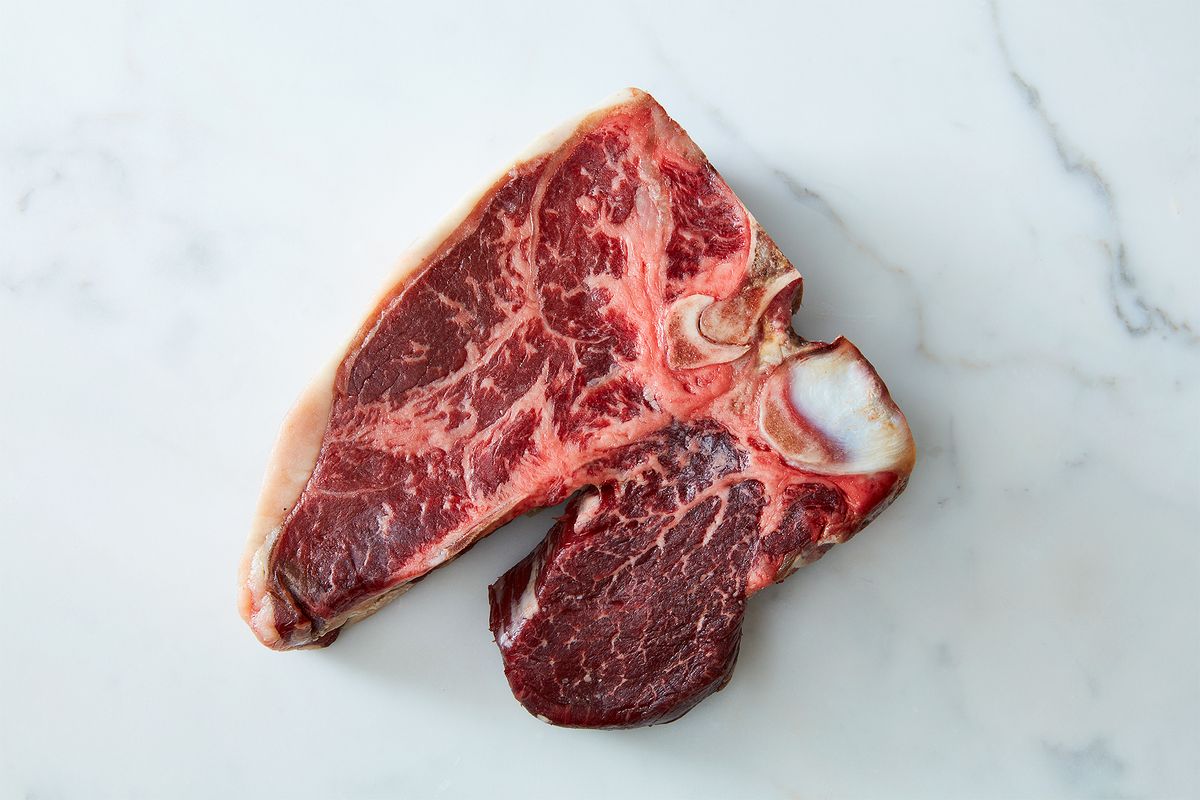
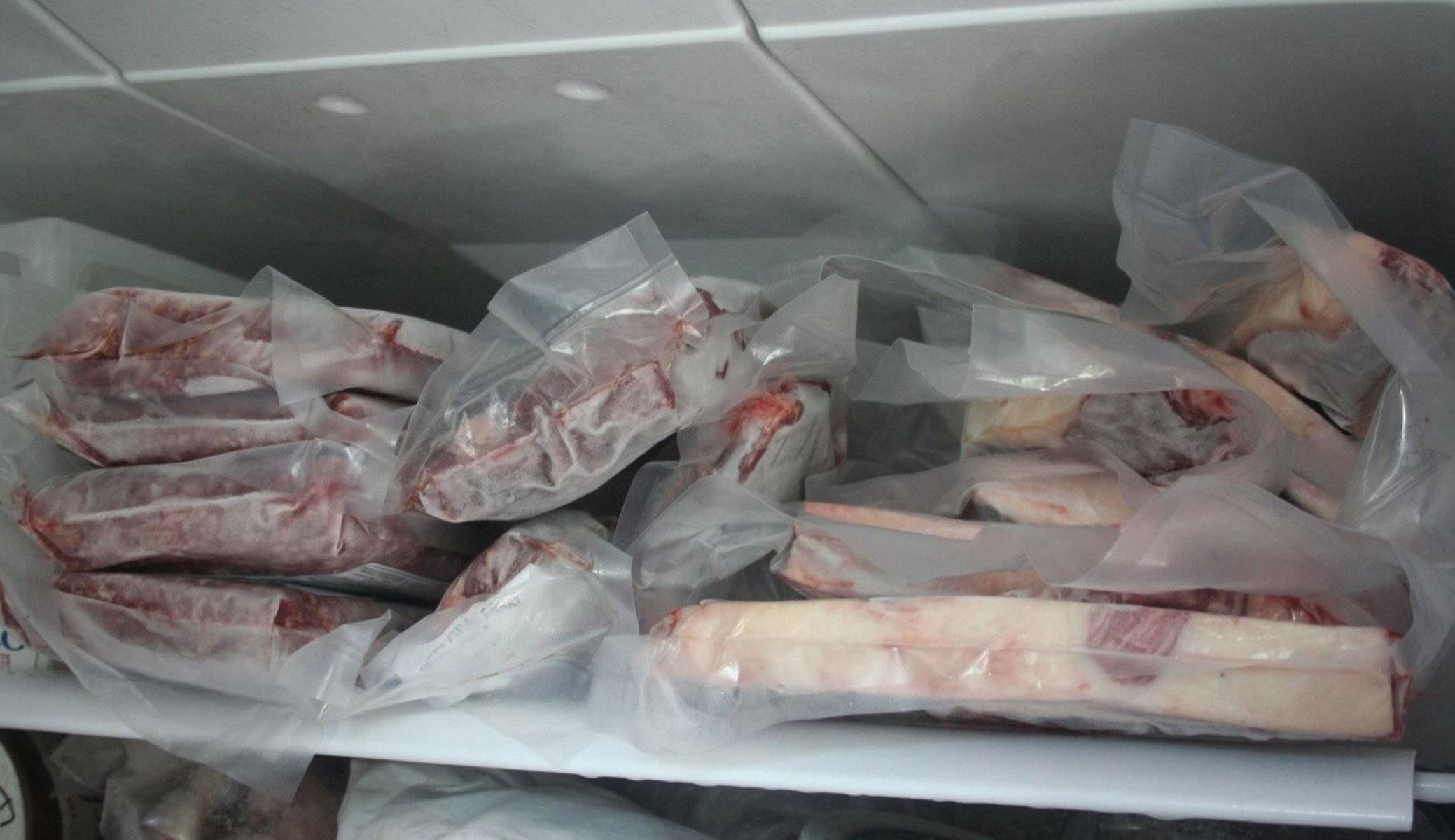
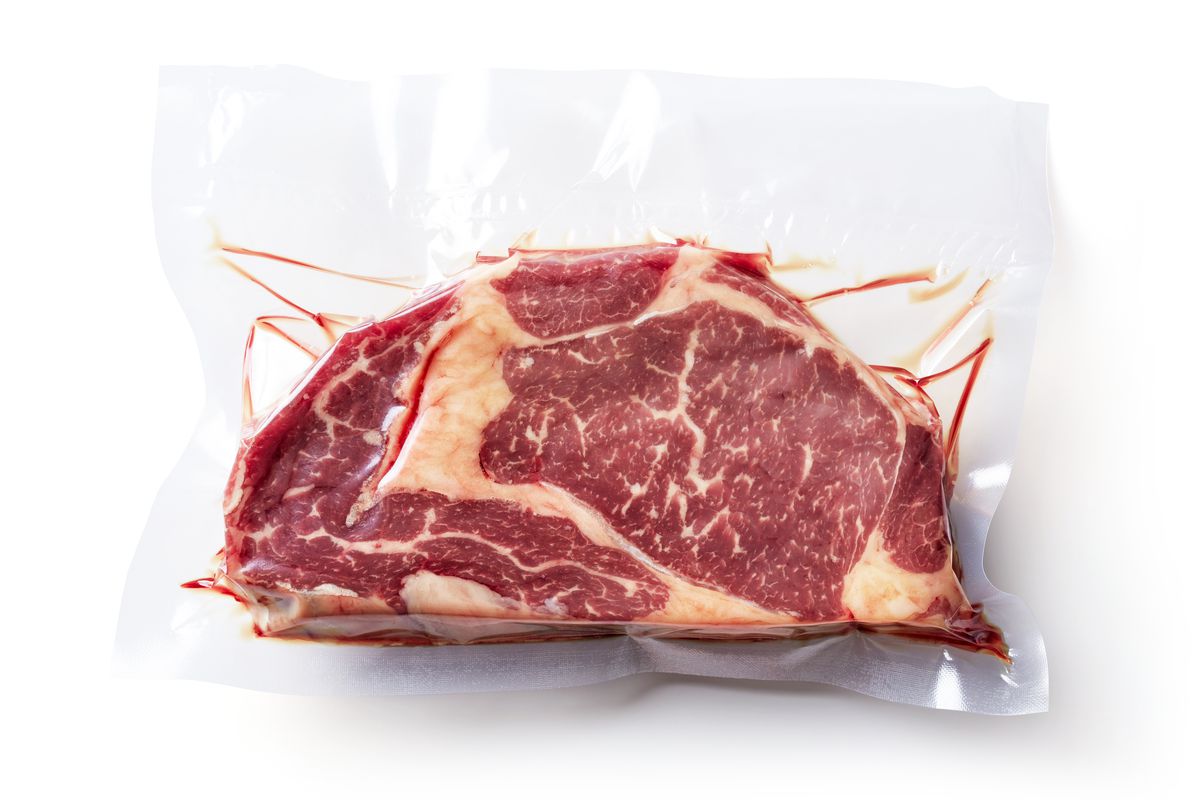
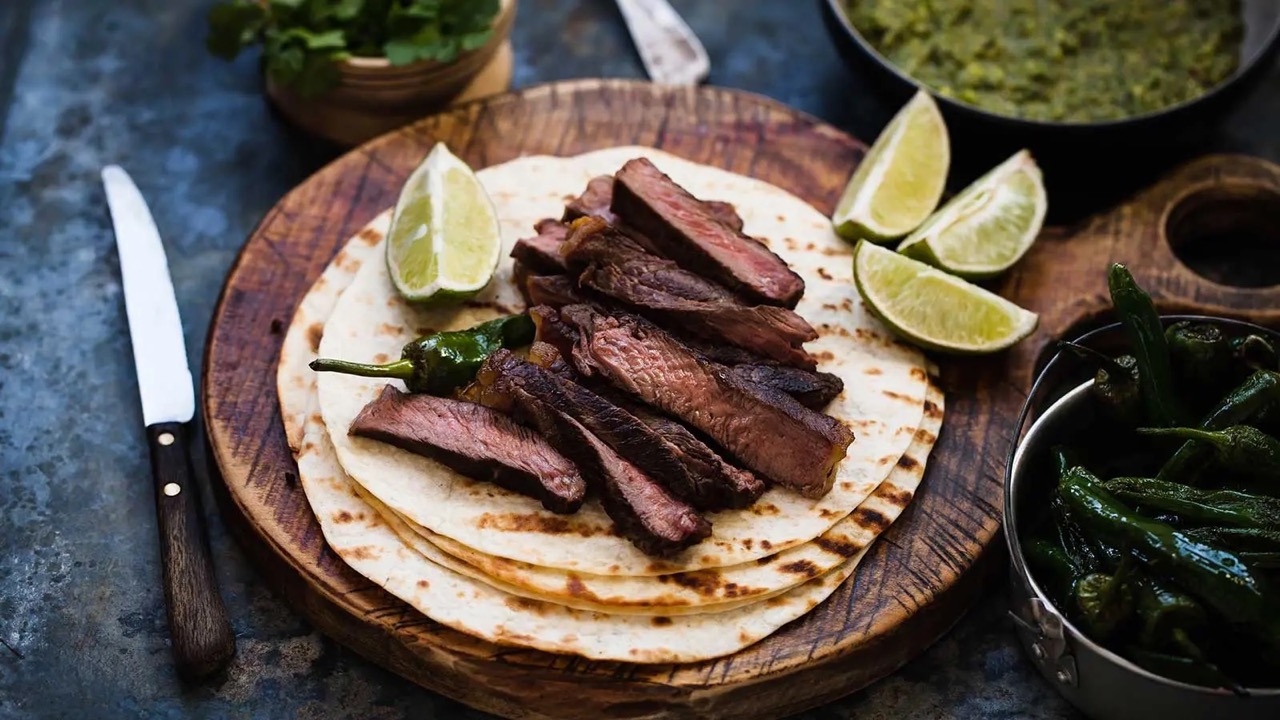
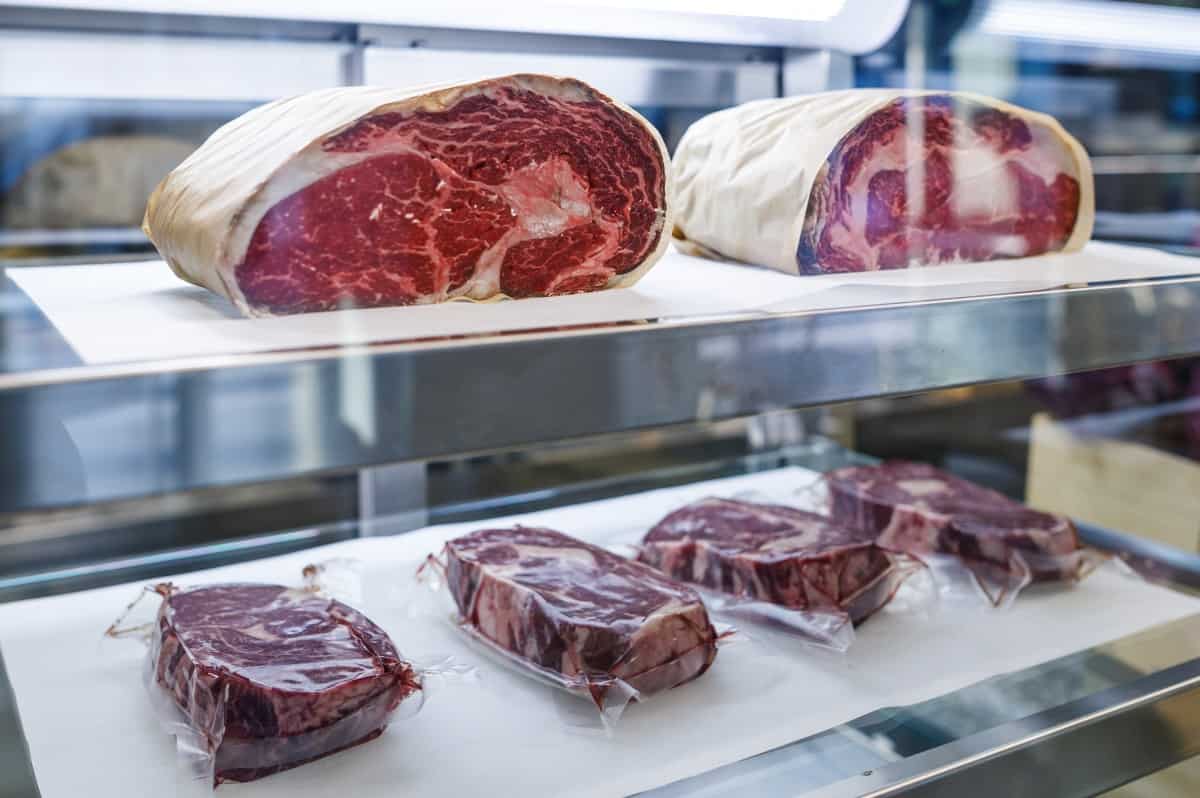
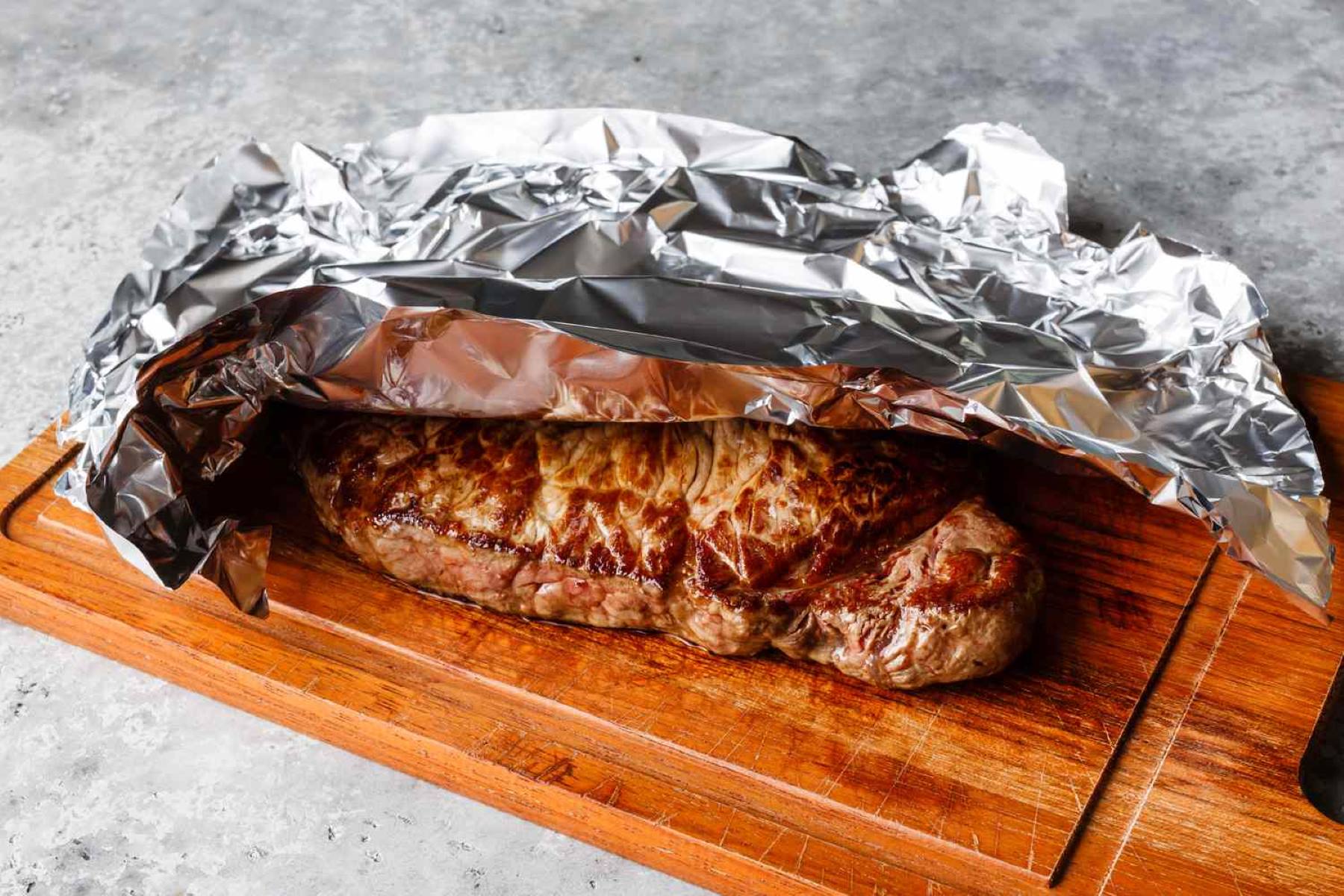
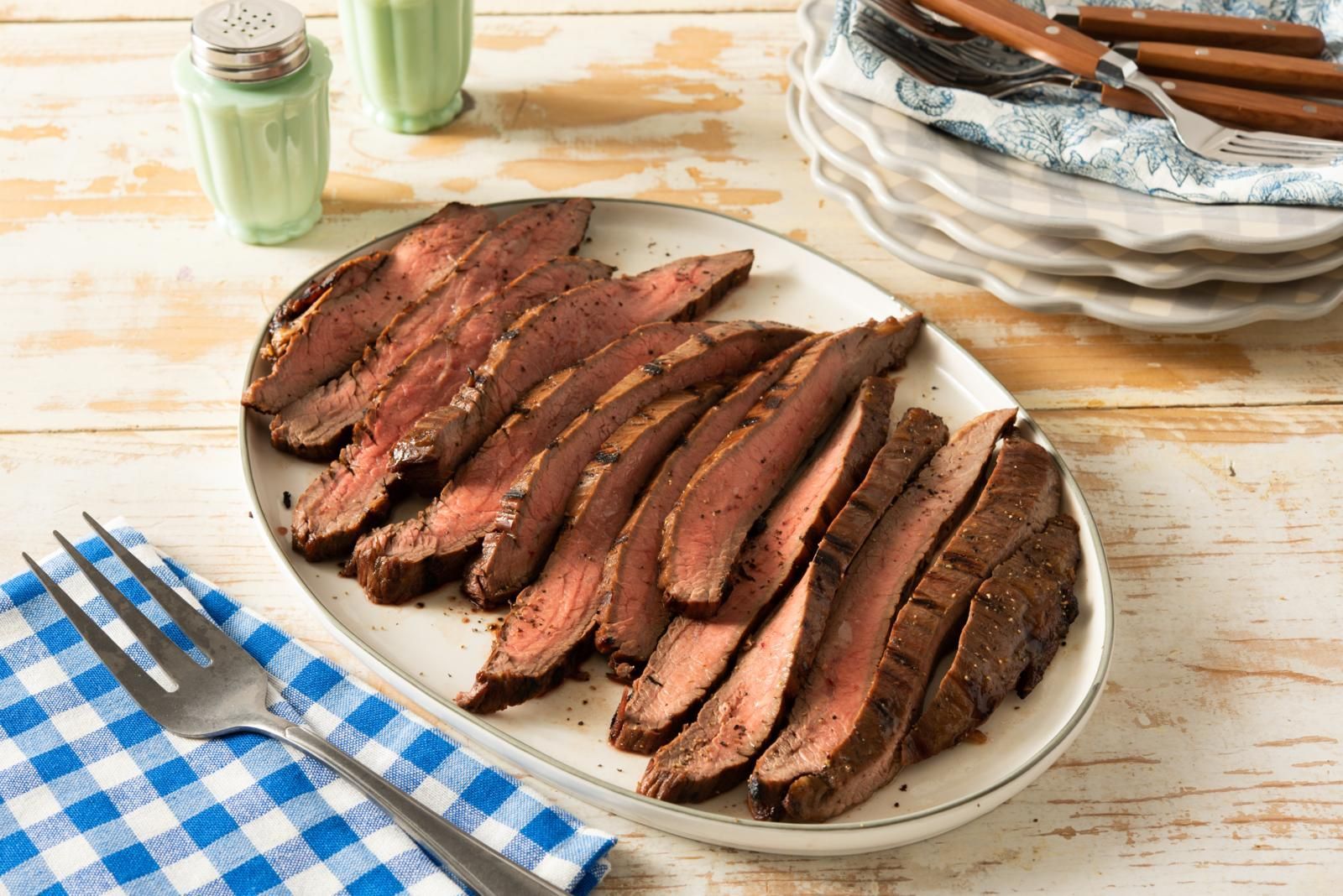

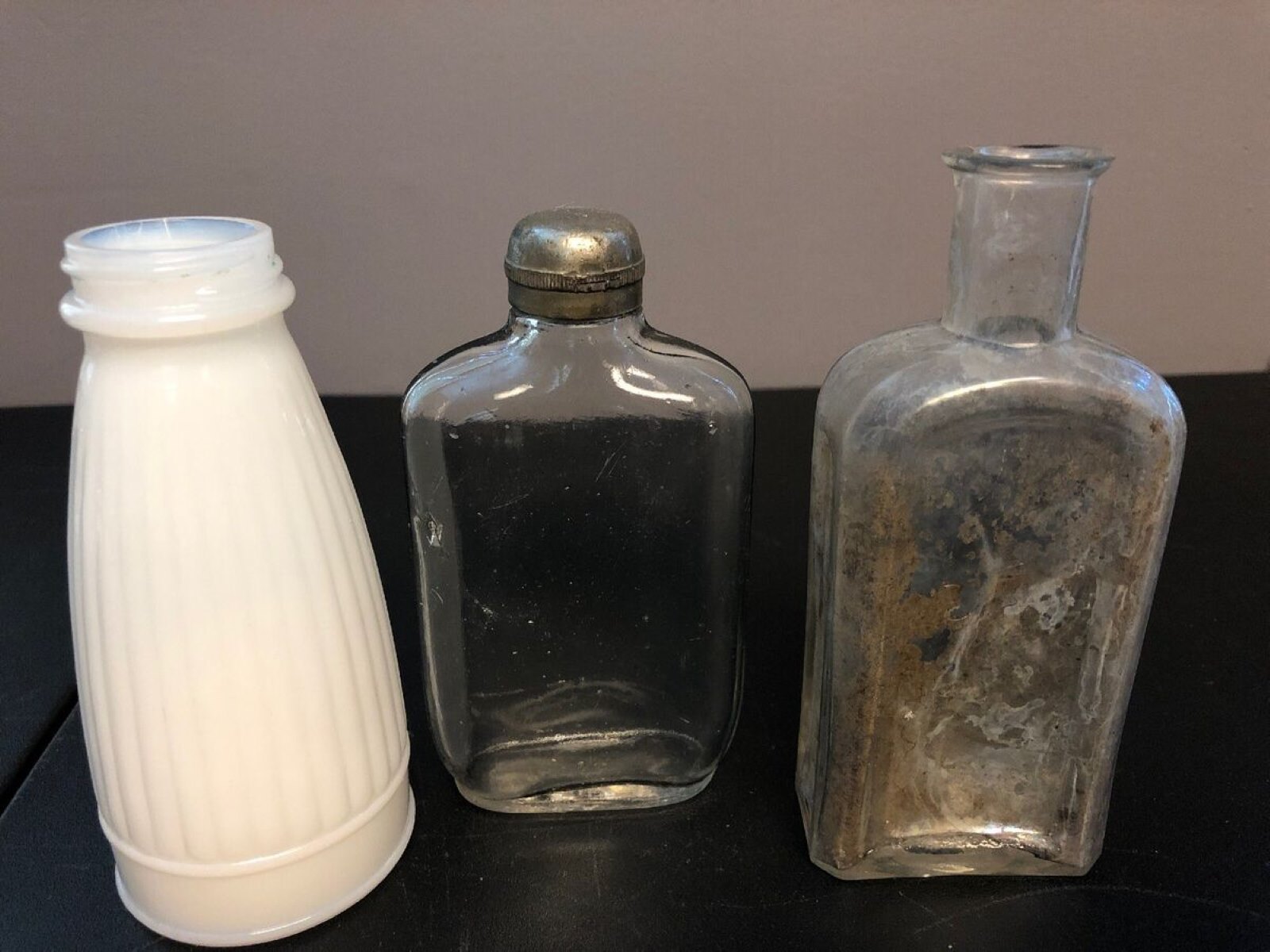

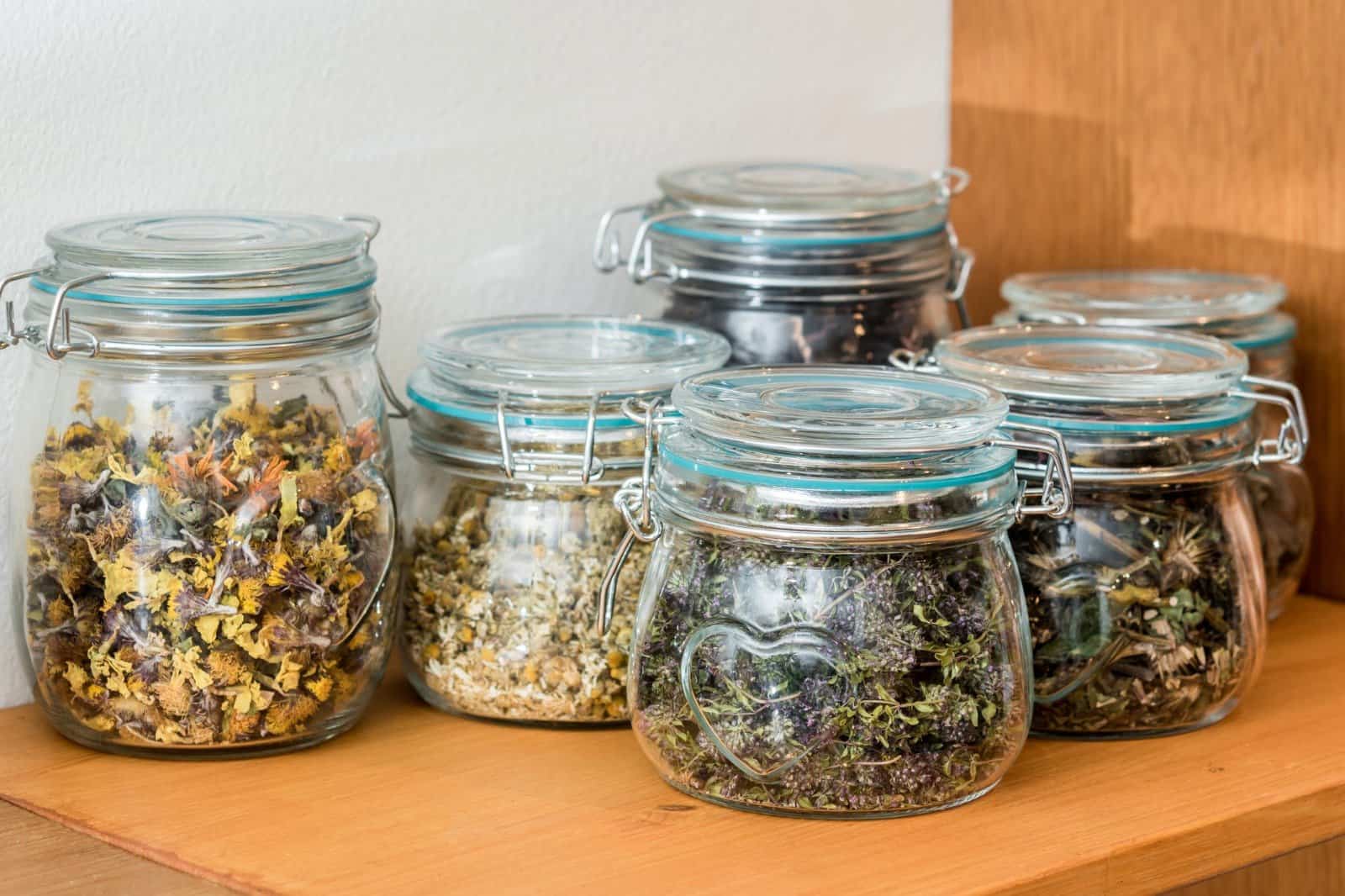
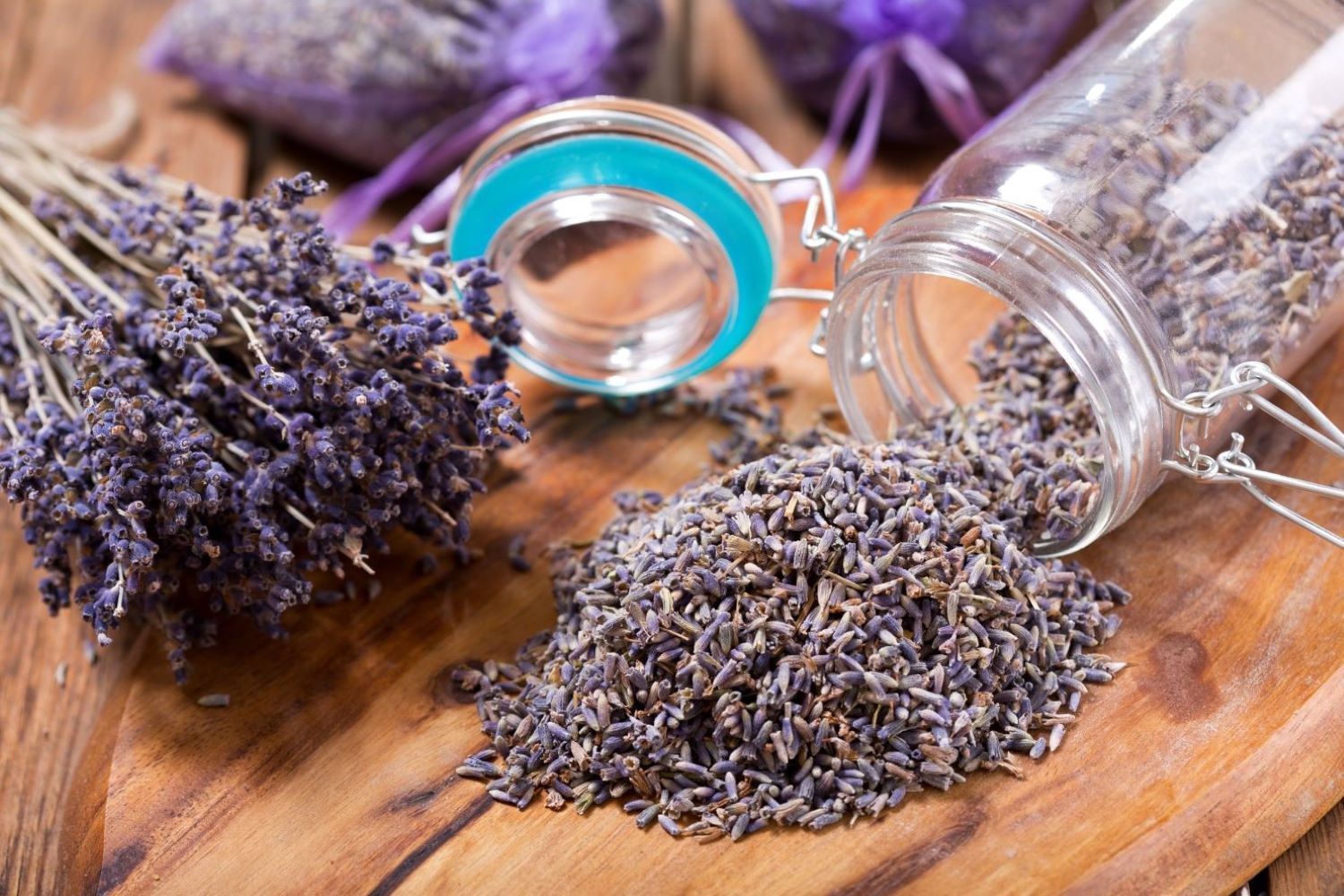

0 thoughts on “How To Store Dry Aged Steak”